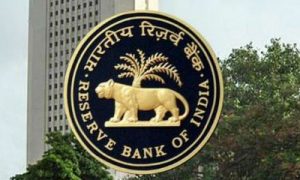Reserve Bank Deputy Governor M Rajeshwar Rao on Friday said consolidation of public sector banks does not seem to have had any negative impact on their outreach or inclusive banking efforts.
The number of state-owned banks has reduced from 27 (in March 2017) to 12 (as of June 2022).
Read More: Booking Fixed Deposit? Check what SBI, ICICI, HDFC Bank offer for 1, 2, 3, 5 and 10 years
Delivering the 12th R K Talwar Memorial Lecture, Rao said the Indian banking system has a very distinguishing characteristic pre- and-post liberalisation.
Read More: Bank Holiday on Diwali? Banks to Remain Closed for 6 Days From Tomorrow; Know Details
Before liberalisation, the Indian economy was largely a mixed economy with government playing a dominant economic role for planned development, he noted.
This economic structure was well aligned with the contemporaneous banking structure where public sector banks owned roughly 90 per cent of total banking assets in India, especially after two major episodes of nationalisation of banks (1969 and 1980).
Read More: As Online Financial Frauds Surge, Here’s a Guide to Protect You Against It
The genesis of financial sector reforms in India could be attributed to the recommendations of the Committee on the Financial System chaired by M Narasimham in 1991.
The Deputy Governor said based on the recommendations of the committee, the dual regulation of banks was proposed to be removed, interest rates were largely deregulated, and Statutory Liquidity Ratio (SLR) and Cash Reserve Ratio (CRR) were reduced to increase the productive capacity of bank capital.
Also, the banking sector started to get reorganised with entry of private sector and foreign banks. The idea of introducing new lenders was to improve the competitiveness of the banking system for better allocative efficiency, Rao said.
He further said since commencement of their business, the new age private sector banks have been contributing increasingly to the credit needs of the economy.
Their share in total credit has increased from about 3 per cent in 1996-97 to 36 per cent in 2021-21, he said.
Rao said the government has been facilitating consolidation of public sector banks in India over the last few years.
“The consolidation of public sector banks does not seem to have had any negative impact on their outreach or inclusive banking efforts as the total number of bank branches has largely remained same (with minor reductions due to rationalisation) pre- and post-merger,” he noted.
Besides, the Deputy Governor said the financial inclusion efforts have already transcended to a business correspondent-led model leveraging on technology.
He further said at a broader level, for enabling a reasonable level playing field, there would have to be a gradual convergence in terms of the operating space and flexibility available to each class of entity.
R K Talwar was a legendary banker who headed the State Bank of India (SBI).





































